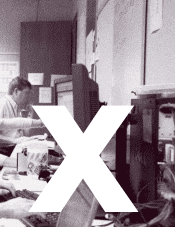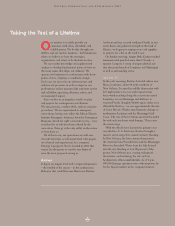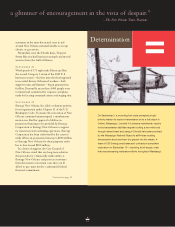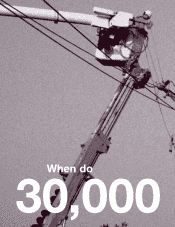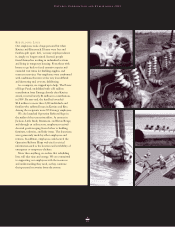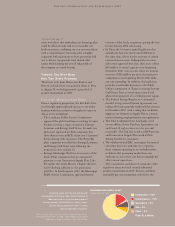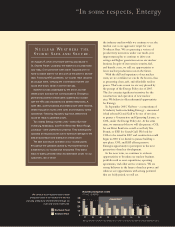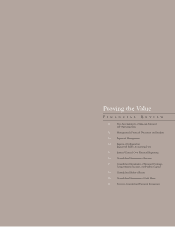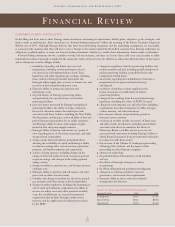Entergy 2005 Annual Report Download - page 24
Download and view the complete annual report
Please find page 24 of the 2005 Entergy annual report below. You can navigate through the pages in the report by either clicking on the pages listed below, or by using the keyword search tool below to find specific information within the annual report.
*
20
RECOVERING PRUDENTLY INCURRED COSTS
Costs associated with the storm restoration efforts
total approximately $1.5 billion. These estimated
costs do not include other storm effects such as
estimated lost net revenue, uncollectible utility
customer receivables, and the longer-term accelerated
replacement of the gas distribution system in New
Orleans. Even as our restoration teams were
working to get the power back on for every
customer possible, others were pursuing multiple
cost recovery initiatives in order to minimize the
storms’ impact on our customers’ electric bills.
Insurance is one avenue for cost recovery.
Coverage is generally not available for transmission
and distribution assets – wires and poles. However,
we do expect to recover some costs through
coverage of our generation and gas system assets.
Repairs to these types of assets represent nearly
20 percent of our total restoration costs. We
expect partial payments from our insurers to
begin in early 2006.
We are also pursuing cost recovery on the federal
front. We have met repeatedly with members of
Congress and the Bush administration to create
opportunities for federal support. Given that our
service territory covers some of the poorest parishes
and counties in the U.S., making our customers pay
the full cost of this natural disaster is, we believe,
both unrealistic and inappropriate.
In late 2005, several opportunities emerged on
the federal front for cost recovery. Congress passed
and the President signed into law the Gulf
Opportunity or GO Zone legislation which permits
public utilities to accelerate the realization of tax
benefits for Hurricane Katrina casualty losses and
repair costs. Congress also passed and the President
signed into law the Katrina Relief Bill – providing
$11.5 billion of Community Development Block
Grants for states affected by Hurricanes Katrina,
Rita, and Wilma. Language in the bill permits
funding for infrastructure restoration – funding
that we intend to pursue in Louisiana, Mississippi,
and Texas.
We continue to work at the federal level to
create additional opportunities to recover our
storm costs. We believe federal assistance is
warranted to ensure our customers receive the
service they deserve at rate levels that are both
affordable and supportive of continued
development and restoration.
At the state level, we can pursue cost recovery
through special provisions in the formula rate plans
that are currently in effect in Louisiana, Mississippi,
and New Orleans. Our rate plans allow for the
recovery of unusual but prudently incurred costs,
such as the costs incurred in the restoration of
power following catastrophic events like Katrina
and Rita, outside the normal rate mechanism. We
have made filings to request interim recovery of
nearly $600 million of storm costs in Louisiana and
Mississippi. And in Texas, the Public Utility
Commission has initiated a project to review
exceptional storm damage costs caused by
Hurricane Rita. We will use rate relief to bridge
the gap between what we are able to recover
through insurance and legislated relief, and our
actual storm restoration costs.
In addition, we are pursuing the possibility of
securitization with regulators in Louisiana,
Mississippi, and Texas. Securitization minimizes
the rate impact on customers by spreading the
restoration costs over an extended time period.
While the costs are recovered from customers over
5 to 15 years, Entergy would recover its costs on
a timely basis by securing low-cost financing
through the capital markets. We expect timely
action by our regulators and legislators on our
request for securitization.
“Entergy is doing a fantastic job



